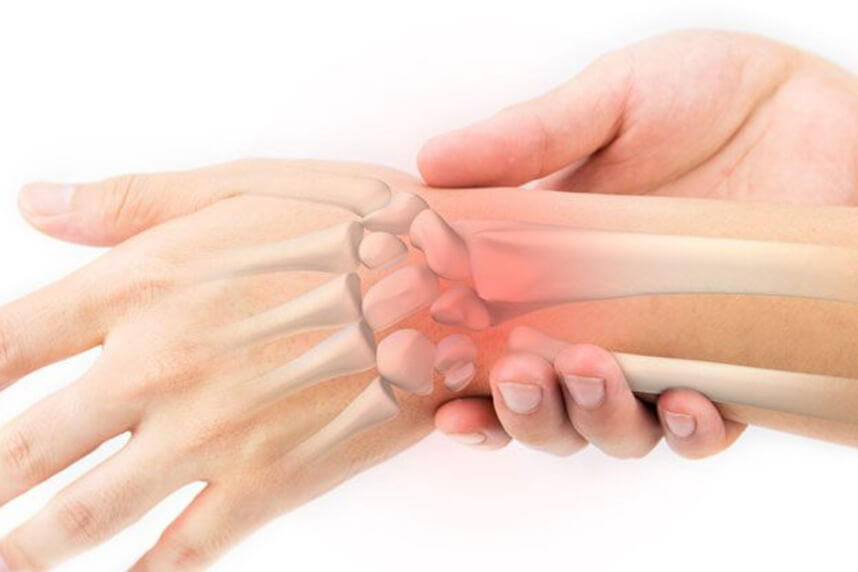
For all traumatic or chronic diseases of the musculoskeletal system, the Centrokinetic private clinic in Bucharest is prepared with an integrated Orthopedic Department, which offers all the necessary services to the patient, from diagnosis to complete recovery.
The Department of Orthopedic Surgery of Centrokinetic is dedicated to providing excellent patient care and exceptional education for young physicians in the fields of orthopedic surgery and musculoskeletal medicine.
Centrokinetic attaches great importance to the entire medical act: investigations necessary for correct diagnosis (ultrasound, MRI), surgery, and postoperative recovery.
Discover the open MRI imaging center in our clinic. Centrokinetic has a state-of-the-art MRI machine, dedicated to musculoskeletal conditions, in the upper and lower limbs. The MRI machine is open so that people suffering from claustrophobia can do this investigation. The examination duration is, on average, 20 minutes.
The fibrocartilaginous triangular complex, or TFCC, is an important structure of the wrist. TFCC consists of hard fibrous tissue and cartilage. This tissue helps to stabilize the wrist joint and connect the forearm with the small bones in the ulnar part of the wrist. There are several types of tissues that form the TFCC and stabilize the ulnar part of the wrist.
.png)
TFCC lesions can occur in two different areas, and in terms of cause, they can occur due to:
- natural wear: they are the most common, they appear at the age of two and three. They are not common in young people;
- following an injury: fall on the hand, a sudden twist of the forearm, a fracture in the fist.
The lesion of the triangular fibrocartilaginous complex (TFCC) is present in up to 80% of patients who have suffered a fracture of the distal radius epiphysis with displacement.
.png)
TFCC often heals with a fracture consolidation, but if the patient remains with chronic pain and instability in the wrist joint, the most common cause of these symptoms is TFCC injury.
Ulnar Fibrocartilaginous Triangular Complex (TFCC) reconstruction technique is a highly effective treatment option to treat peripheral ulnar lesions of the joint disc. By reconstructing both the superficial and the deep layers (ligamentum subcruentum) of the articular disc, this technique offers an anatomical TFCC insertion.
.png) | .png) | .png) |
Post surgery
After the intervention, the patient remains hospitalized for 1 day. He will receive pain medication and antibiotics during hospitalization. The operated limb is not immobilized, the patient is advised not to make movements of the fist, from the first postoperative day, except the elbow and fingers. However, a hand orthosis will be fitted, which will be worn, especially at night.
Patients will wear a compressive bandage on the fist for 5 days and will use a special orthosis, which can be easily removed for personal hygiene. Patients can return to family and professional activities quickly, in a maximum of 4-6 weeks.
At homeAlthough recovery after this operation is much faster than classic intervention, it will still take a few weeks for you to fully recover. You should expect pain and discomfort for at least a week post surgery. You must be careful not to force the operated area by making very wide flexion and extension movements in the first weeks because the pain and discomfort can worsen. You can take a bath, but without wetting the bandage and incisions. The threads are suppressed at 14 days post surgery.
At 6 weeks postoperatively, an x-ray is necessary to see how the affected joint heals. Driving is allowed after 6 weeks, and hard physical work after 12-16 weeks.
Physical therapy plays a very important role in the rehabilitation program, and the exercises must be followed by a physical therapist until the recovery period ends. It is very important to follow the recovery program strictly and seriously for the surgery to be a success. Our medical team works, on average, 18-24 weeks with the patient until the complete recovery of the operated area.
Following any surgery, medical recovery plays an essential role in the social, professional, and family reintegration of the patient. Because we pursue the optimal outcome for each patient entering the clinic, recovery medicine from Centrokinetic is based on a team of experienced physicians and physical therapists and standardized medical protocols.

MAKE AN APPOINTMENT
CONTACT US
MAKE AN APPOINTMENT
FOR AN EXAMINATION
See here how you can make an appointment and the location of our clinics.
MAKE AN APPOINTMENT

































































































































